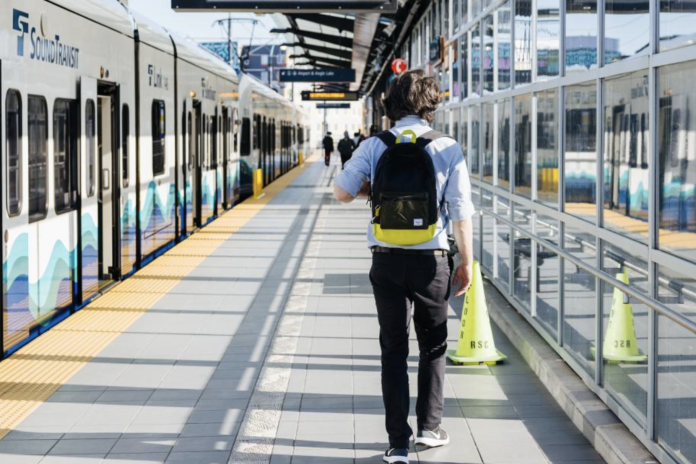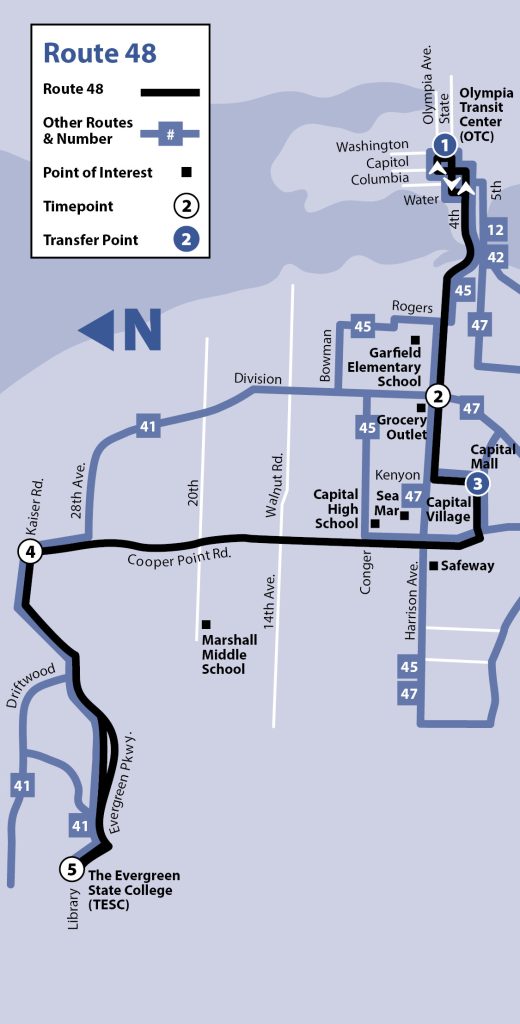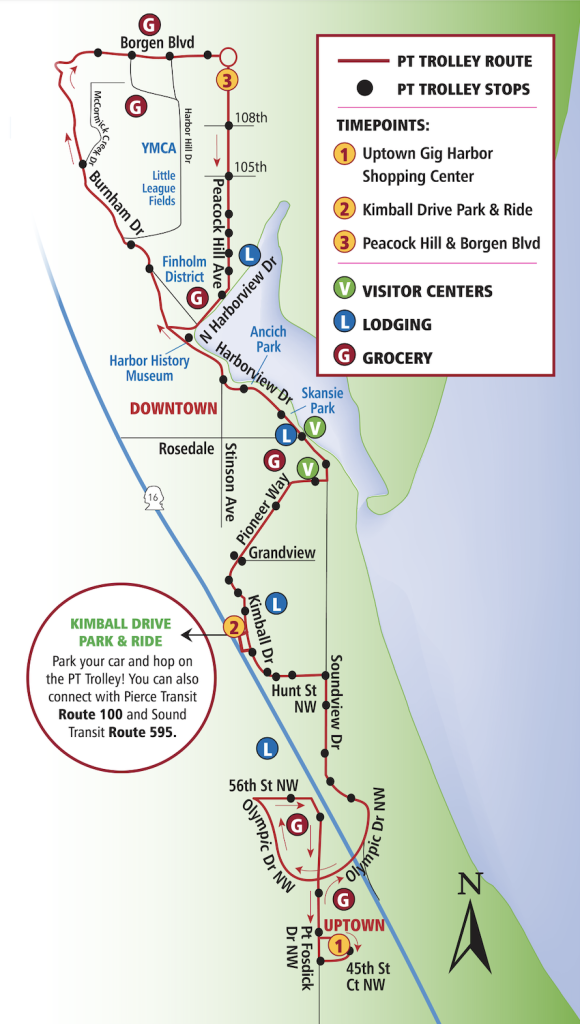Three Puget Sound transit agencies are improving service beginning this weekend. Chief among them is Sound Transit, which will bump up Central Link light rail service nearly back to pre-pandemic levels. Intercity Transit and Pierce Transit are also rolling out additional service for riders in Olympia and Gig Harbor.
Link service improvements
Last week, Sound Transit announced that Central Link would see big service increases starting on Saturday, June 12th. Trains will run as frequently as every eight minutes during weekday peak hours, every ten minutes during weekday off-peak hours and on weekends, and every 15 minutes during late evening hours.
Service of late has been every 12 minutes during weekday peak hours, every 15 minutes during weekday off-peak hours and weekends, and every 30 minutes during late evening hours. Prior to the pandemic, service on the line had run every six minutes during weekday peak hours, every ten minutes during weekday off-peak hours and weekends, and every 15 minutes during late evening hours.
Sound Transit’s Chief Executive Officer, Peter Rogoff, heralded the news in a press release: “The days are longer, the weather is warmer, the virus is retreating, and we are all venturing out more and more. In the coming months as more and more people return to normal routines, expanded Link service will help riders get back to enjoying fast and congestion-free trips,” he said. “With traffic congestion worsening and already at pre-pandemic levels, the benefits of Link will only keep growing, especially with our Oct. 2 expansion of service northward to the U District, Roosevelt, and Northgate.”
Intercity Transit service improvements
In Olympia, Intercity Transit is doubling service frequency on Route 48 that runs between Evergreen State College and Downtown Olympia. Service will go from every hour to every half hour. This affects weekday and weekend service and should be a welcome change for college students and local residents. On its way between downtown and the college, the route passes by the Capitol Mall and through the west side of Olympia.
Intercity Transit is also planning to roll out schedule adjustments to Routes 12, 48, 62A, 62B, 65, and 68. The changes altogether start on Sunday, June 13th and brings the agency to 67% of pre-pandemic service levels. The agency has said that it hopes to restart its cross-county service to Lakewood in Pierce County at the SR-512 Park-and-Ride. This service ran prior to the pandemic from Downtown Olympia, offering riders an express route option to and from Pierce County via I-5. The number of bus operators available to Intercity Transit appears to be the main obstacle to service restoration, according to an agency newsletter.
Additionally, Intercity Transit has reopened its customer service center at the newish Olympia Transit Center. Agency service staff are on hand from 7am to 6pm at the facility.
Pierce Transit service improvements
Pierce Transit is bringing back the Gig Harbor Trolley, a bus fashioned in the style of olden days trolley trams. The service is signed as Route 101 and will begin on Sunday, June 13th. The frequency is half-hourly on weekdays and weekends. However, the service period is slightly longer on Saturdays than weekdays. Sundays will remain the sparsest day. The service did not run last summer because of the pandemic but had in 2019.
The route is flagged with special historic-style stop signs and runs from Gig Harbor’s historic waterfront district to Harbor Hill and the Uptown shopping district. Riders are able to reach other bus service at the Kimball Drive Park-and-Ride. Cost per ride is only $0.50 and $1.00 for an all-day pass. ORCA cards can also be used. Pierce Transit plans to run the service through Thursday, September 2nd.
Stephen is a professional urban planner in Puget Sound with a passion for sustainable, livable, and diverse cities. He is especially interested in how policies, regulations, and programs can promote positive outcomes for communities. With stints in great cities like Bellingham and Cork, Stephen currently lives in Seattle. He primarily covers land use and transportation issues and has been with The Urbanist since 2014.





